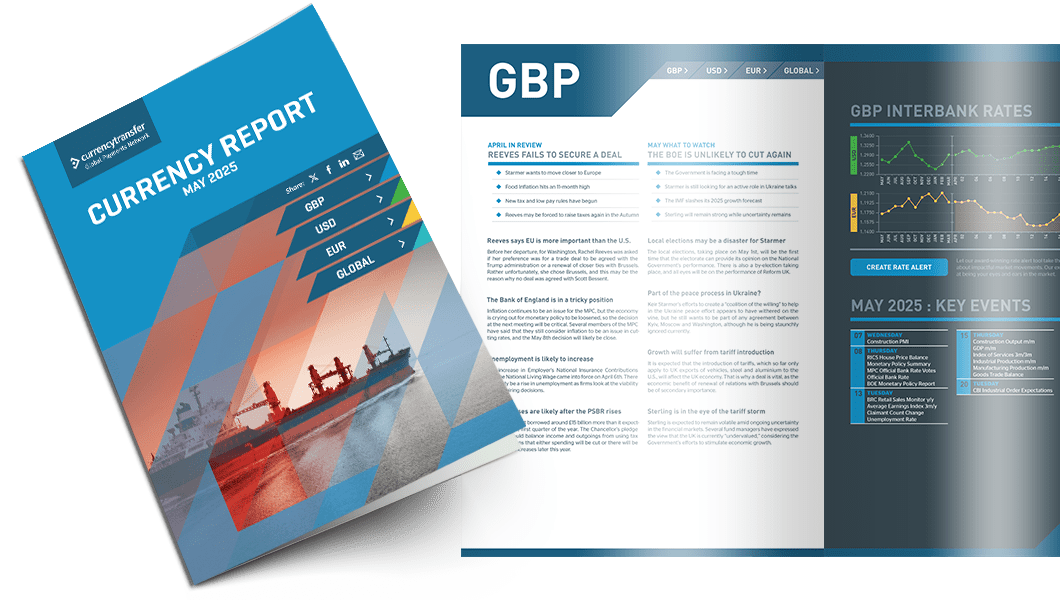
Highlights
- 4th quarter GDP upgrade confirms no recession in 2023
- As turmoil settles down, Fed expected to hike one last time
- Output remains in contraction, threatening recovery
Market still unsure about BoE actions at next meeting
According to a note to investors published by the London office of Deutsche Bank yesterday, the data released by the Office for National Statistics last week confirmed that the final figure for GDP in 2022 was 4.1% up from 4% previously.
The positive carry-over of the data has, according to the German bank’s economic models, improves the chances that the UK economy won’t see a recession this year, but that is where the good news ends as the economy will almost certainly stagnate with whole year GDP of 0%.
Despite no upgrades to its quarterly projections, Deutsche sees an improvement of 0.2% overall on its overall data for the year.
With the economy on a tightrope this year, even the slightest adjustment to forecasts will create an overall change in the data. The Bank of England appears to still be considering its next move. Arch-hawk Catherine Mann tempered her tendencies last month, and voted for a twenty-five basis point rise in base rates, in line with most of her colleagues.
She believes that the fall in the headline rate of inflation, even though the core remains uncomfortably high, means that rates are now in a neutral phase, and while adjustments to monetary policy are still needed a more delicate touch is necessary.
The UK, in line with most of the developed economies, released output data yesterday. It showed that manufacturing output remained in a contractive phase and fell marginally from 48 to 47.9.
Manufacturing output only makes up 20% of overall GDP, while services account for 80%. This sector has been carrying manufacturing for some time now, although the March figure was a little weaker than that seen for February. The data for new orders reflected a renewed confidence, while job growth steadied after recent increases.
Overall confidence in the economy was unchanged from last month which reflects its current fragility.
Sterling rose yesterday as data from the U.S. was weaker than the market had expected. It rose to a high of 1.2423, closing at 1.2413. It is now close to testing major resistance near the years’ high at 1.2448 and will need to build significant momentum if it is to break that level at its first attempt.

Read our latest currency report
Most impactful events planned this month and how they could impact your business
Contracts for the fifth consecutive month
This confusion isn’t helped by the FOMC, which is, if anything, adding to it by releasing mixed signals about its intentions.
With the turmoil over liquidity beginning to recede, it is likely that the Central bank will hike rates by a further twenty-five basis points at its next meeting and then announce a pause.
The Fed Chairman remains hawkish over inflation, but may be coming around to his colleagues’ way of looking at price increases, although any rise in the price of a barrel of oil, following the announcement last week that OPEC will cut production by a million barrels a day, may see the price begin to rise again.
This leads directly into headline inflation and has an almost immediate effect. The FOMC will be watching the oil price closely, and it is likely that any rise of more than a few dollars a barrel will make their mind up about a hike.
PMI data released yesterday drove a more bearish view of the economy. The overall figure fell to 46. 3 from 47.7 in February. While the services sector remains resilient, manufacturing is reeling from the rate hikes that have continued for close to a year.
Headline manufacturing was at its lowest since before the Pandemic, with every component below the breakeven level of 50. This was the first time this has happened since 2008.
The slowdown in manufacturing activity is pushing prices lower, which will at least benefit inflation, and this is also allowing supply chains to be repaired.
Uncertainty around a recession is discouraging forms from making medium term investments in new equipment, while the uncertainty in the financial sector is weighing on activity.
With interest rates close to neutral, the effect of any further rate increases will be magnified. The Fed will need the additional time it has at its disposal before its next meeting to consider all the possibilities.
The dollar index reacted poorly to yesterday’s data. It fell to a low of 101.97, closing at 102.06. It ended the day sitting on a line of support and while market sentiment remains weak, a test of the next support at around 101.60 could be seen.
The German growth engine has stalled
Arguably, data for German factory output that was released yesterday is more important than data for the entire Eurozone.
Germany has proved itself over decades to be the growth engine for the region, but that engine is currently stalling. Output remains in the doldrums and hasn’t seen any meaningful expansion for at least two quarters. Consumers are also beginning to feel the pinch, with retail sales falling by 7.1% last month after a 6.9% fall in February.
Overall manufacturing output for the Eurozone fell to 47.3 from 48.5 in February, its sharpest decline since last November. The overall market view is that the ECB will continue to hike rates throughout the current quarter as it senses victory over inflation following its fall from 8.5% to 6.9% in preliminary data for March.
With rates now definitely in restrictive territory, the ECB may consider whether two twenty-five basis point hikes will be more effective than a single fifty point hike. That will encourage companies of all sizes to consider beginning to invest again.
There was one positive note from the PMI data, delivery times for raw materials and spare parts have shortened as supply chains are just about back to normal.
Greece saw the greatest improvement in output, followed by Spain and Italy, while Germany and Austria saw the largest falls in three years.
Once the ECB has ended its programme of fate hikes, it will have to consider how to support Germany in regaining its place as the growth engine of the Eurozone, because util it does any regional improvements are little more than froth on the cappuccino.
The euro is still moving towards a test of the 1.10 level versus the dollar. There remain a few minor hurdles to be overcome, but a test of the significant resistance is expected in the next week or so.
Yesterday, the single currency rose to a high of1.0916, although it fell back to close at 1.0896, disappointing more bullish investors who were looking for a close above the 1.09 level.
Have a great day!

Exchange rate movements:
03 Apr - 04 Apr 2023
Click on a currency pair to set up a rate alert
Alan Hill
Alan has been involved in the FX market for more than 25 years and brings a wealth of experience to his content. His knowledge has been gained while trading through some of the most volatile periods of recent history. His commentary relies on an understanding of past events and how they will affect future market performance.